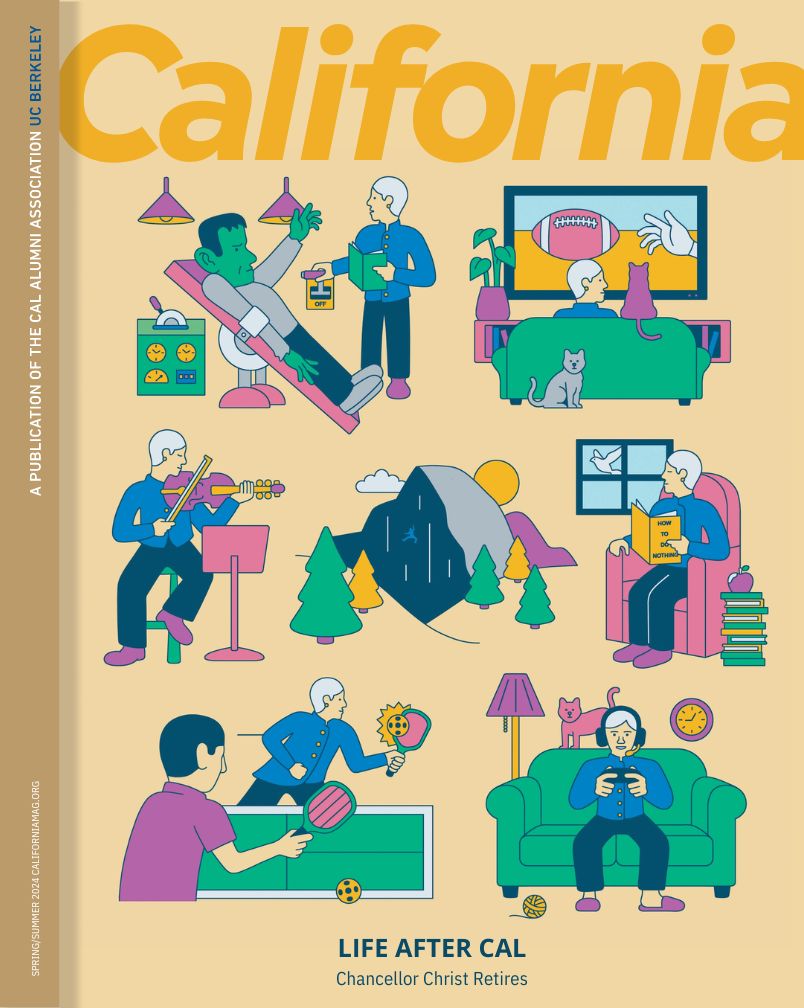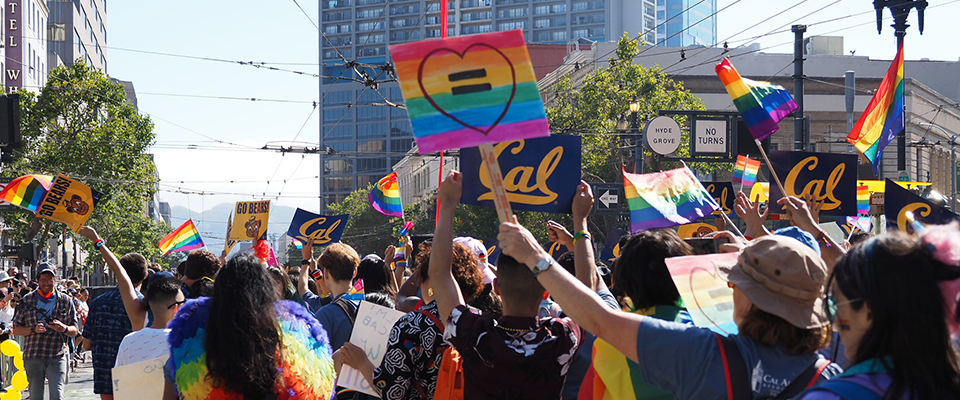In a six-part series, we highlight a few of the moments, movements, and people that made their mark on Cal’s LGBTQ+ history. We move through the decades, beginning in an era of secrecy and continuing through today.
The transformative ’60s and ’70s
The gay rights movement saw some forward motion in the 1960s. Dr. John Oliver coined the term “transgender” in his book Sexual Hygiene and Pathology. Activism percolated. It exploded, in a sense, in June 1969 with the Stonewall Riots in New York City—a response to a police raid that took place at the Greenwich Village bar The Stonewall Inn.
In 1969, two groups formed on the UC Berkeley campus: Students for Gay Power and Gay Liberation Front. According to William Benemann ’71, M.L.S. ’75 (former Berkeley Law archivist, author, and founder of the Gay Bears Collection in the University Archives), the Gay Liberation Front was very radical for its time. “They were too ‘out’ for me and most of us at that time,” he says. “Being in the closet is about controlling your story. I felt I couldn’t trust them with my story. They were very courageous people though.”
Around the same time, a group of gay students formed a community center called Sherwood Forest, which met at the Wesley Center. It offered counseling, a Friday and Saturday night coffee club, and Sunday religious services.
In 1970, the newly formed Gay Student Union organized Berkeley’s first openly gay dance. It was an unprecedented event, so much so that a KQED reporter famously asked then-California governor Ronald Reagan if he planned to attend. “I haven’t been invited yet!” he responded. To help him feel included, about 100 students sent him invitations.

In 1973, the Pacific Center for Human Growth formed in Berkeley. “It was the place to talk about gay male issues and to meet people outside of bars,” says Benemann. The Pacific Center is the only sliding-scale mental health clinic for LGBTQ people and their families in Alameda County and is now the third-oldest LGBTQ center in the nation.
Across the Bay Bridge, gay and bisexual men, including Harvey Milk, migrated to the Castro starting in the early 1970s. In 1977, Milk became the first openly gay elected official in California’s history when he joined the San Francisco Board of Supervisors.
Influenced by Milk and inspired by a colleague, Cal emeritus professor of philosophy Bruce Vermazen decided to come out to his students. Near the end of each semester, he gave a short coming-out speech. “My idea was that students might change their attitudes for the better if they knew I was gay,” he wrote in an email. “I hope that my 20 years of announcements had a net positive effect.”
Vermazen also recalls a student and faculty group formed, to the best of his memory, in 1978 in response to Ballot Proposition 6. The ballot measure proposed to make homosexuality a firing offense for public school teachers.
The intent of the group was to form an alliance in case an anti-gay crusade erupted at Cal. They held meetings monthly, usually in someone’s home. It was there that Vermazen first heard discussion of same-sex marriage—an outrageous thought at the time—and the first time he met the late Sheldon Andelson, the University of California’s first openly gay regent.
by Heather R. Johnson


















